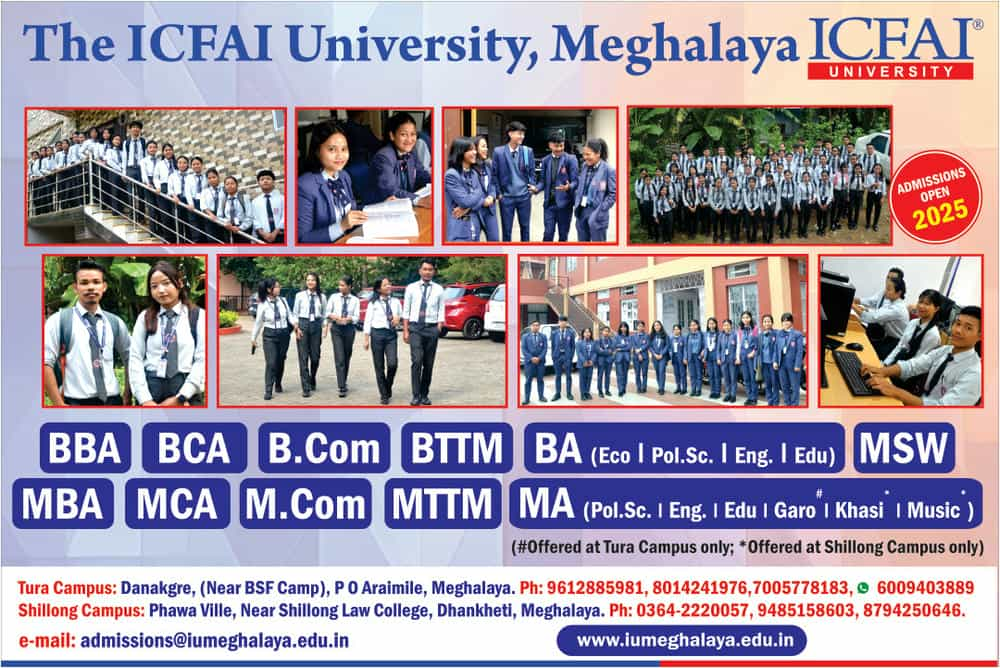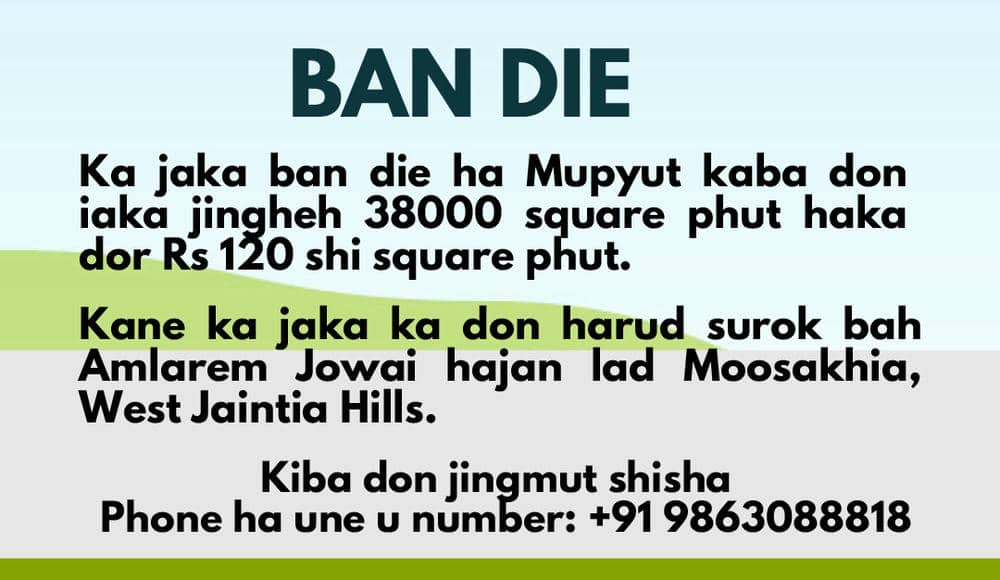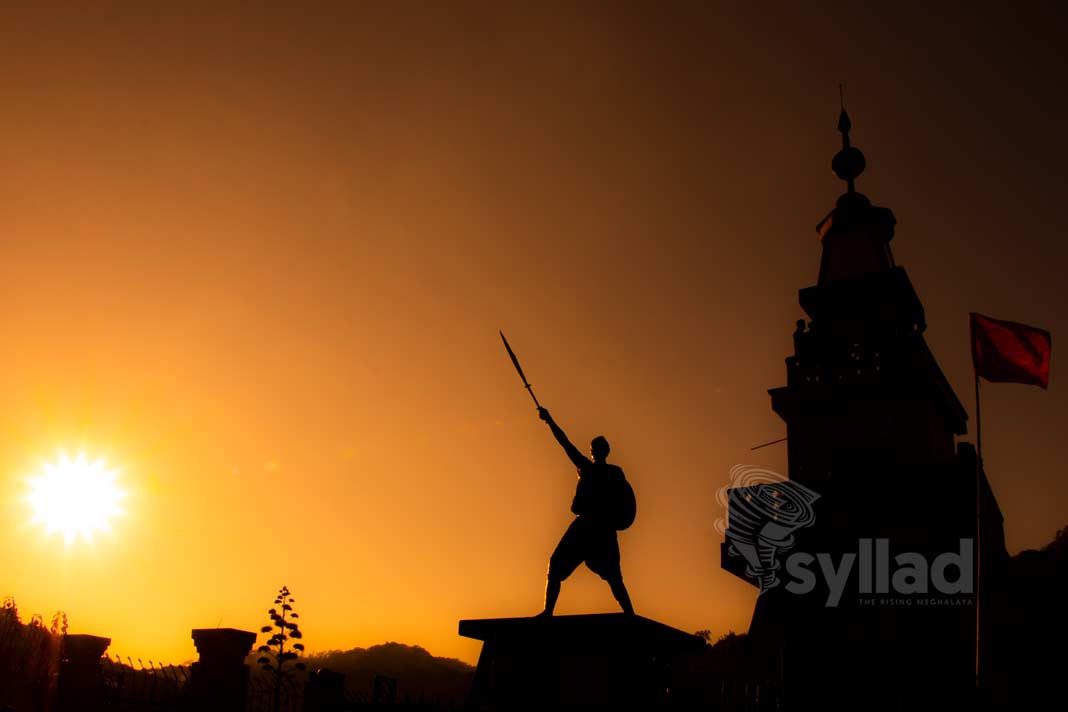U Kiang Nangbah: The invisible was also invincible

Who was U Kiang Nangbah?
The identity of the leader of the rebellion was oblivious to British officers who were responsible for running the affairs of the government in the Khasi and Jaiñtia hills. Like any rebel leader as long as he can U Kiang Nangbah remained elusive. Even though the rebellion started in the beginning of 1862, the leader of the rebels remained invisible and elusive to the officers. In his letter to the officiating commissioner of Assam -(Dated Jowai, the 30th September 1862) Captain BWD Morton DC Khasi and Jañtia hills said “no chief of sufficient influence had as yet delivered themselves up.” To the enemy the leader of the rebellion was elusive, he remains invisible and invincible to his enemy. Captain BWD Morton Deputy Commissioner Khasi and Jaiñtia Hills’ letter to the Secretary of the Government of Bengal dated October, 15, 1862 best described how the British saw U Kiang Nangbah when he said: ‘How to obtain this success against an enemy who scarcely, ever shew himself, and whose idea of victory consist not in the possession of their country, but in the proportion of men disabled on either side is indeed difficult matter to decide.’
Although the government in the region has made used all its power to win him over or get him submitted to the government, but he remained adamant and did not surrender. At times when other Dalois and their followers had shown inclination of submitting to the government, but U Kiang Nangbah and his followers from Jowai did not give in and others too were compelled to follow their leader.
Tribal Democracy at Work

There were two incidents in the history of the Jaiñtia rebellion which demonstrated the uniqueness and the vitality of Jaiñtia democracy. U Kiang Nangbah to his People was a leader who did not speak much but was quick with his action. To the people of Jaiñtia he was a gentle but very courageous person who was willing to sacrifice himself for the sake of others. But the fact that he was also a Daloi did not find mention in the oral narrative of the area. U Kiang Nangbah was known as ‘a rebel Daloi’ to the officers in the British government.
Hajun Manick on being examined by BWD Morton and Major Langmore Commanding officer of 33rd Native Infantry on 13 October 1862 said: “At the first dorbar the following were present: the rebel Daloi of Jowai U Kiang Nangbah, the Daloi of Shangpung u Kiri Daloi, the Daloi of Raliang, the Daloi of Shilliang Myntang, the Daloi of Rymbai, a Pator of Nartiang, the rebel daloi of Nongjngi.” BWD Morton explained that the word rebel was inserted before the name of some rebels because the real Daloi have remained friendly with the government, while the rebels have elected in their place, a person from amongst themselves as Daloi. (BWD Morton, DC Khasi Jaintia hills to the Secretary Government of Bengal dated 15th October 1862). It may be mentioned that the elected Daloi of Jowai then was u Manik Palynteñ also known as u Daloi Tyngker (perhaps because of his physical stature) who remained friendly with the British Government.
By electing u Kiang Nangbah as their Daloi, the rebels have demonstrated the essence of democracy in Jañtia, that the Daloi remains a Daloi as long as he has the support of the people. In this case in the eye of the rebels, u Manik Pakynteñ ceased to be a Daloi once he lost the support of the people. Another incident in the history of the rebellion which demonstrated the essence and the uniqueness of the Khasi Pnar democracy was an incident related with the Kur or the royal family of the Jañtia kingdom.
The Royal family of Jañtia and their interest
The involvement of the heir to the Jañtia kingdom or the member of the clan/Kur to negotiate with the rebels was proposed by Ram Singh the Raja of Cherra. The proposal was to allow them to collect the taxes with the government paying them the commission in addition to the Rs 500/- pension that was paid to them by the government. He also suggested that permission is given to the Kur to settled in Jaiñtiapur. But the king was informed that his suggestion cannot be accepted and their proposal will be considered only if they can convince the rebel to give up their fight. It is obvious that the royal family too have their own axe to grind. They enter into agreement with the officer to mediate with the rebels and bring them over ground just to avail benefits provided and of course pension from the British government.
Hajun was examined along with his cousin brother Ram Singh by Morton and Langmore on October 13, 1862. During the interviewed Hajun said that he was also present at the Dorbar which was held at Lad Tuber and reported that, except for u Kiang Nangbah all the rebel leaders were present. They said u Kiang was sick. The rebels said that they will only be satisfied if the government give them everything, their Raj, excused them their taxes etc. On this the Kur said, “Don’t say so, otherwise we shall be blamed and perhaps deprived of our pension.” To this, the rebel replied, “We have nothing to do with you. We will elect whom we will as Rajah”. (BWD Morton, DC Khasi Jaintia hills to the Secretary Government of Bengal dated 15th October 1862). The incident demonstrated the essence of tribal democracy, that the king belongs to the people and he remains so as long as he gets their support but once he lost their confidence then the subject can elect another person as their king.
The First act of rebellion
Oral narrative says that the first act of rebellion engaged by the Pnar on the British government was the burning of the police station in Jowai but British officers have other opinion. BWD Morton in one of his communication General CB Showers has alluded about the case of the cutting of two men carrying dak from Nartiang to Shilliang Myntang in cold-blooded murder. The two men murdered were from Nongbah village. Earlier it was stated that the two murdered were common men, but Morton clarified that the two men murdered were carrying arms so they were in fact sepoys. The cutting of the sepoys who were part of the 33rd Native Infantry was not meant to be included as murder and was the attack made by the Jañtia rebel was fair said Morton. Morton also admitted that this has also resulted in the loss of many men. Apart from the sepoys, coolies, other were also killed for showing loyalty to the government. Morton also mentioned that the settlement of the Jynteah/Jañtia hills depend on the submission of the leaders. (Captain BWD Morton, Deputy Commissioner for the Cossyah and Jynteeah hills, to Major J.C. Haughton, officiating agent Governor General, NE frontier, – (No. 278, dated Cherra Poonjee, the 28th August 1862)
Six Thousand Strong Army against a Band of One thousand Rebels
There is always a question as to how the rebels under the leadership of u Kiang Nangbah fought against the might of the British Empire. Or how strong was the rebels that they think they can defeat the government? On being examined by Major Langmore, Commanding the 33rd Native Infantry, and Captiain Morton, Deputy Commissioner in charge of the Khasi Jañtia hills on 13th of October 1862, said that at Lad Tuber he met u Myllon Daloi of Mynso, the Daloi of Rymbai, the Daloi of Raliang, Shilliang Myntang, Sutnga and the Daloi of Nongjngi. Although he did not recognize them all but people told him that all Dalois were present and there about 1500 rebels in the gathering.
Captain BWD Morton on journal entry dated the 3rd October, he said Ram Singh, Rajah of Cherra sent message to him to say that he hoped to meet the rebel leader u Kiang Nangbah today at Lad Tuber. While Lieutenant Andrew informed that thousands of rebels have assembled at Shangpung to speak with the Kurs and to see the golden sword which is the property of the late Rajah of Jañtiapur. Morton however strongly believed that the numbers has been exaggerated by the Lieutenant and he could be right too, because giving the impression that they have of the Royal Family the general public too would definitely want to see the royal family and the golden sword.
The very important question is how big was u Kiang’s army? The mediator said that at one point of time, they met about 1500 hundred of them, so can we conclude that there were about fifteen hundred rebels in u Kiang Nangbah’s command? The other important question is how big was the army that the British employed to combat the rebellion? James Howard Thornton said that the revolt of the Jañtia which began in the early part of 1862, continued for fifteen months and it caused heavy losses to the government. It was finally suppressed, with much difficulty and great expense, by the employment of 5000 or 6000 troops and police. (The Memoir of Dr James Howard Thornton).
In spite of having to fight against the big British army, u Kiang and his band of few hundred rebels did not succumb to the pressure and submit to the government. They fought till the last with some even having to die for the freedom of their land.

Leave a Reply